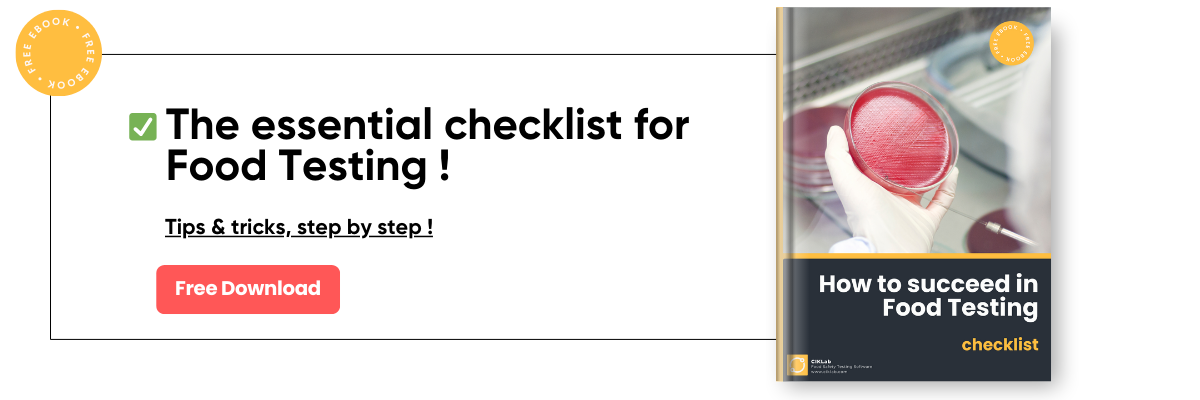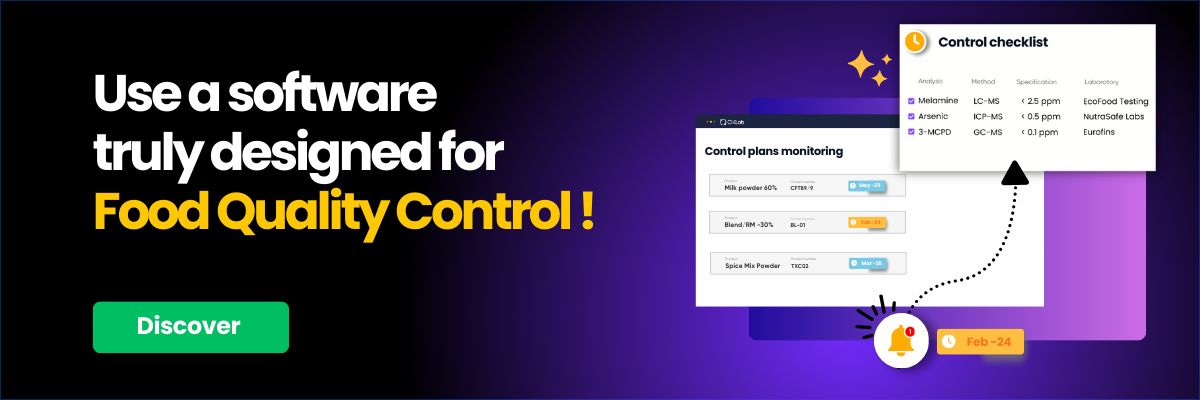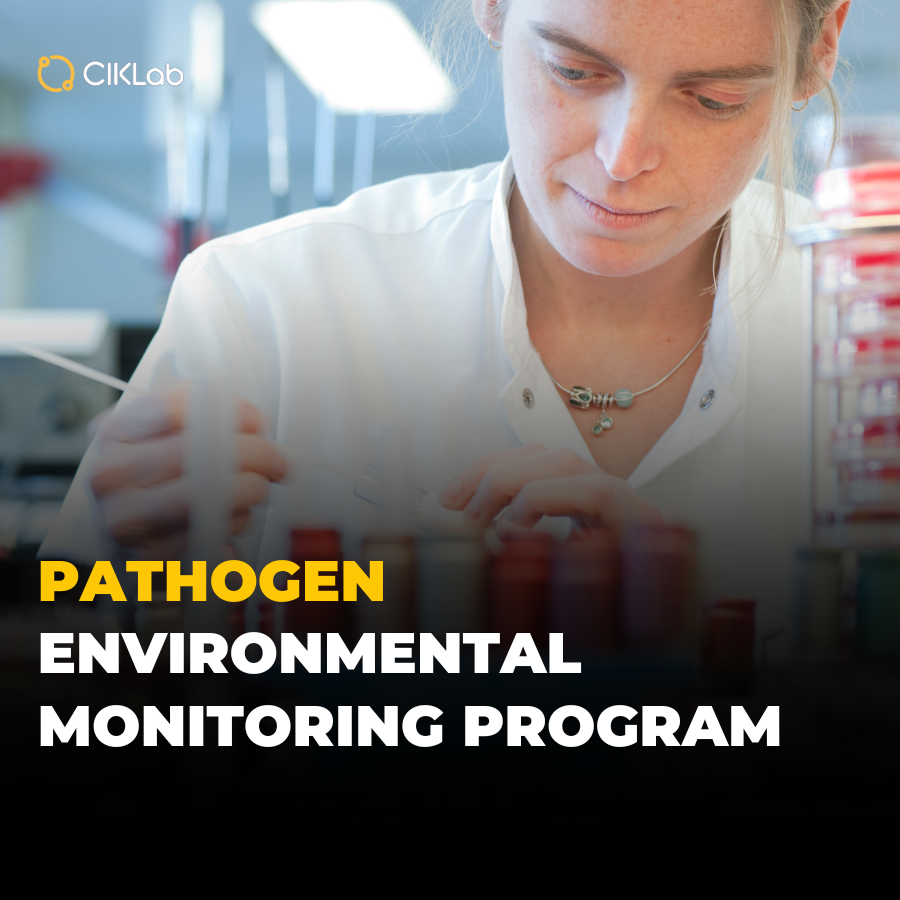Environmental Monitoring Programs (EMP) identify potential sources of microbiological or allergenic contamination in food production environments. By adopting a systematic approach and involving a multidisciplinary team, EMPs allow manufacturers to identify risk zones, select key pathogens to monitor, and establish regular, thorough controls.
Summary
1) What is an Environmental Monitoring Program (EMP)?
2) Why Implement an Environmental Monitoring Program ?
3) What is the Objective of a Pathogen Environmental Monitoring Plan?
4) Steps to Implement a Pathogen Environmental Monitoring Program
What is an Environmental Monitoring Program (EMP)?
For the food industry, ensuring food safety is an ongoing challenge. To prevent contamination, particularly microbiological, a hazard and risk-based control plan is essential. This plan covers not only the final products but also, increasingly, the production environment.
Environmental monitoring programs play a critical role in maintaining food safety by sampling and testing the production environment to detect potential microbiological or allergenic contamination. Although this data collection primarily focuses on microbial ecosystems, it also includes information on water quality, temperature, humidity, and operator hygiene.
Why Implement an Environmental Monitoring Program ?
Implementing an EMP is crucial for ensuring food safety. In recent years, it has been demonstrated that microbiological contamination of finished products often originates from pathogens in the immediate production environment, with some even persisting for years as "resident strains."
Failures in equipment, procedures, or cleaning can create niches where pathogens like Listeria monocytogenes, Cronobacter, and Salmonella thrive, potentially contaminating finished products sporadically, making detection difficult. Thus, environmental controls are now seen as essential, complementing rather than being secondary to finished product controls.
What is the Objective of a Pathogen Environmental Monitoring Plan?
A pathogen EMP aims to prevent microbiological contamination of food products from the production environment, serving as an early warning system to preempt potential problems.
The focus should not be solely on raw materials, finished products, and manufacturing processes but on the entire production environment, including the facility itself.
Objectives :
- Identify pathogens before they contaminate products.
- Assess the effectiveness of control measures: cleaning, processes, equipment, employee hygiene, etc.
it’s crucial not to confuse environmental monitoring with cleaning effectiveness checks; the latter is only one aspect of an EMP.
Steps to Implement a Pathogen Environmental Monitoring Program
Food production environments are rarely sterile. Each site develops its unique ecosystem, influenced by processes, equipment, and raw materials used. Some microorganisms can adapt to these environments, requiring careful selection of indicators and specific pathogens to monitor. For example, seafood and chocolate manufacturing require different pathogen surveillance.
Key pathogens to monitor include Listeria spp., Salmonella, Cronobacter spp., and Escherichia coli. Surveillance can be indirect, using indicator tests.
Step #1: Assemble a Team
Like in hazard evaluation and HACCP studies, gather a multidisciplinary team comprising microbiologists, quality assurance, maintenance, and production staff.
Step #2: Assess Risks and Identify Pathogens to Monitor
Compile all relevant regulations, guidelines, and best practices for the processed products, installations, and machinery. Know the pathogens that thrive in specific environments (e.g., Listeria thrives in refrigerated areas, Salmonella in warmer zones).
Step #3: Identify High-Risk Zones
At this stage, it’s essential to first review the different process flows within the plant, directly on-site, and alongside the entire team. Zoning is commonly used to classify different areas by risk level, indicating where contamination is most likely to occur. Generally, four zones are identified, each with varying levels of contamination risk depending on proximity to the product and critical production steps. This step helps in defining the sampling plan and establishing thorough monitoring protocols
- Zone 1 : These are the most critical areas that come into direct contact with the product after the microbial reduction step but before packaging, such as peelers, fillers, sieves, conveyors, and operators' hands.
- Zone 2 : Areas close to product contact surfaces but not in direct contact, like control panels, buttons, or conveyor frames.
- Zone 3 : Surfaces not directly in contact with the product but within processing areas post-microbial reduction
- Zone 4 : Distant areas like cafeterias, locker rooms, storage areas, and hallways, which can still pose cross-contamination risks.
Step #4: Define a Sampling Strategy and Frequency
The sampling plan is a key component of the monitoring program and may include different types of monitoring: standard, enhanced, or investigative.
The sampling plan consists of:
- A list of sampling points for each zone
- The number of samples to collect
- Sampling frequency (daily, weekly, monthly)
- Sampling times (e.g., after cleaning, mid-production)
- Sampling methods (swab, cloth, sponge) using standards like ISO 18593:2018.
Random samples are also essential to avoid cognitive bias and ensure potential issues are discovered, rather than just confirming control.
Never lose sight of the primary goal, which is not just to search for pathogens, but to actually find them !
Step #5: Choose the Right Methods and Laboratories
It is essential to carefully select the sampling techniques and protocols for pathogen detection, as well as the expertise and accreditation of laboratories.
When choosing sampling methods, factors such as sensitivity, specificity, ease of use, and compatibility with the facility’s operations must be considered.
Use official methods, like ISO 6579 for Salmonella detection. Keep meticulous records of all test results, along with relevant data such as temperature, humidity, teams, and the products produced on that day. These records are critical for analyzing results and identifying trends.
Step #6: Have a Clear and Defined Action Plan for Positive Results
As a manufacturer, it's expected that an action plan is in place for positive results. This includes suspending the release of finished products and placing them in quarantine. The equipment should be dismantled for thorough cleaning and verified post-cleaning. Enhanced testing around the positive zone is necessary, and strain identification through sequencing is recommended to determine if it's a resident strain.
After restarting, follow-up testing should continue until three consecutive negative results are obtained. Finally, a root cause analysis is mandatory to address the issue.
Conclusion
In the end, a well-structured environmental monitoring plan goes beyond merely detecting pathogens; it focuses on creating a production environment where contamination risks are controlled, ensuring both food quality and safety. This proactive approach, when properly implemented, strengthens trust in manufacturing processes and safeguards the consumer !








